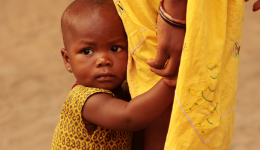13 Life Saving Commodities
In 2010, the United Nations (UN) Secretary-General’s Global Strategy for Women’s and Children’s Health called on the global community to save 16 million lives by 2015 and achieve Millennium Development Goals (MDGs) 4 & 5 – to reduce child mortality and improve maternal health. The strategy highlighted the impact that a lack of access to life-saving commodities has on the health of women and children around the world, which catalyzed the formation of the UN Commission on Life-Saving Commodities for Women’s and Children’s Health (“the Commission”). The Commission – part of the Every Woman, Every Child (EWEC) movement – was formed to increase access to life-saving medicines and health supplies for the world’s most vulnerable people.
The Commission identified a priority list of 13 overlooked life-saving commodities across the reproductive, maternal, newborn, and child health (RMNCH) ‘continuum of care’ that, if more widely accessed and properly used, could save the lives of more than 6 million[1] women and children.
Although demand generation is a persistent weakness across all the commodities, this I-Kit focuses on 9 priority commodities most ripe for demand generation activities: Contraceptive implants, emergency contraceptive pills, female condom, misoprostol, magnesium sulfate, chlorhexidine, ORS, zinc and amoxicillin. Resources for the other commodities may be added in the future, depending on country needs.















 This website is made possible by the support of the American People through the
This website is made possible by the support of the American People through the